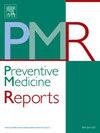亚洲房颤患者对卒中预防治疗的偏好:离散选择实验
IF 2.4
3区 医学
Q2 PUBLIC, ENVIRONMENTAL & OCCUPATIONAL HEALTH
引用次数: 0
摘要
目的房颤患者的卒中预防应根据患者的需要和偏好进行调整。本研究量化了中国、台湾和韩国患者对房颤卒中预防治疗关键特征的偏好。方法采用离散选择实验(DCE)调查方法,对相关文献进行分析,并与临床和方法学专家进行讨论。DCE包括六个属性:死亡风险、严重残疾、轻度或中度残疾、非致残事件;与食物一起摄入;以及给药频率。DCE数据采用混合多项逻辑模型进行分析。结果2023年1 - 3月,中国大陆(155)、台湾(76)和韩国(76)共307名参与者完成了DCE。房颤诊断的平均时间为6.3年。参与者更喜欢临床结果更好的治疗方法,死亡风险降低是他们最重要的属性。他们认为严重残疾风险降低1%等同于死亡风险降低0.36%,轻度或中度残疾风险降低1%等同于死亡风险降低0.25%,非致残事件风险降低1%等同于死亡风险降低0.18%。与临床结果相比,参与者对食物摄入和给药频率的偏好更具异质性。结论房颤患者愿意接受增加的非致残性事件风险以换取降低的死亡风险,但在治疗给药特征上有不同的偏好。这些发现可以为考虑治疗属性在临床决策中的相对重要性的以患者为中心的治疗策略提供信息。本文章由计算机程序翻译,如有差异,请以英文原文为准。
Patient preferences for stroke prevention treatments in atrial fibrillation in Asia: A discrete choice experiment
Objective
Stroke prevention in patients with atrial fibrillation should be adapted to patient needs and preferences. This study quantifies patient preferences for key characteristics of atrial fibrillation stroke prevention treatments in China, Taiwan, and South Korea.
Methods
A discrete choice experiment (DCE) survey was developed based on a targeted literature review and discussions with clinical and methodological experts. The DCE included six attributes: risks of death, severe disabilities, mild or moderate disabilities, non-disabling events; intake with food; and dosing frequency. DCE data were analyzed using mixed multinomial logit models.
Results
In January to March 2023, 307 participants completed the DCE in China (n = 155), Taiwan (n = 76), and South Korea (n = 76). Average time since atrial fibrillation diagnosis was 6.3 years. Participants preferred treatments with improved clinical outcomes, with reduced risk of death being their most important attribute. They valued a 1 % reduction in severe disability risk the same as a 0.36 % death risk reduction, a 1 % reduction in mild or moderate disability risk the same as a 0.25 % death risk reduction, and a 1 % reduction in non-disabling event risk the same as a 0.18 % death risk reduction. Participant preferences on intake with food and dosing frequency were more heterogeneous than for clinical outcomes.
Conclusion
Patients with atrial fibrillation were willing to accept an increased risk of non-disabling events in exchange for a reduced risk of death but had diverse preferences for treatment administration characteristics. These findings can inform patient-centered treatment strategies that consider the relative importance of treatment attributes in clinical decision-making.
求助全文
通过发布文献求助,成功后即可免费获取论文全文。
去求助
来源期刊

Preventive Medicine Reports
Medicine-Public Health, Environmental and Occupational Health
CiteScore
3.90
自引率
0.00%
发文量
353
 求助内容:
求助内容: 应助结果提醒方式:
应助结果提醒方式:


